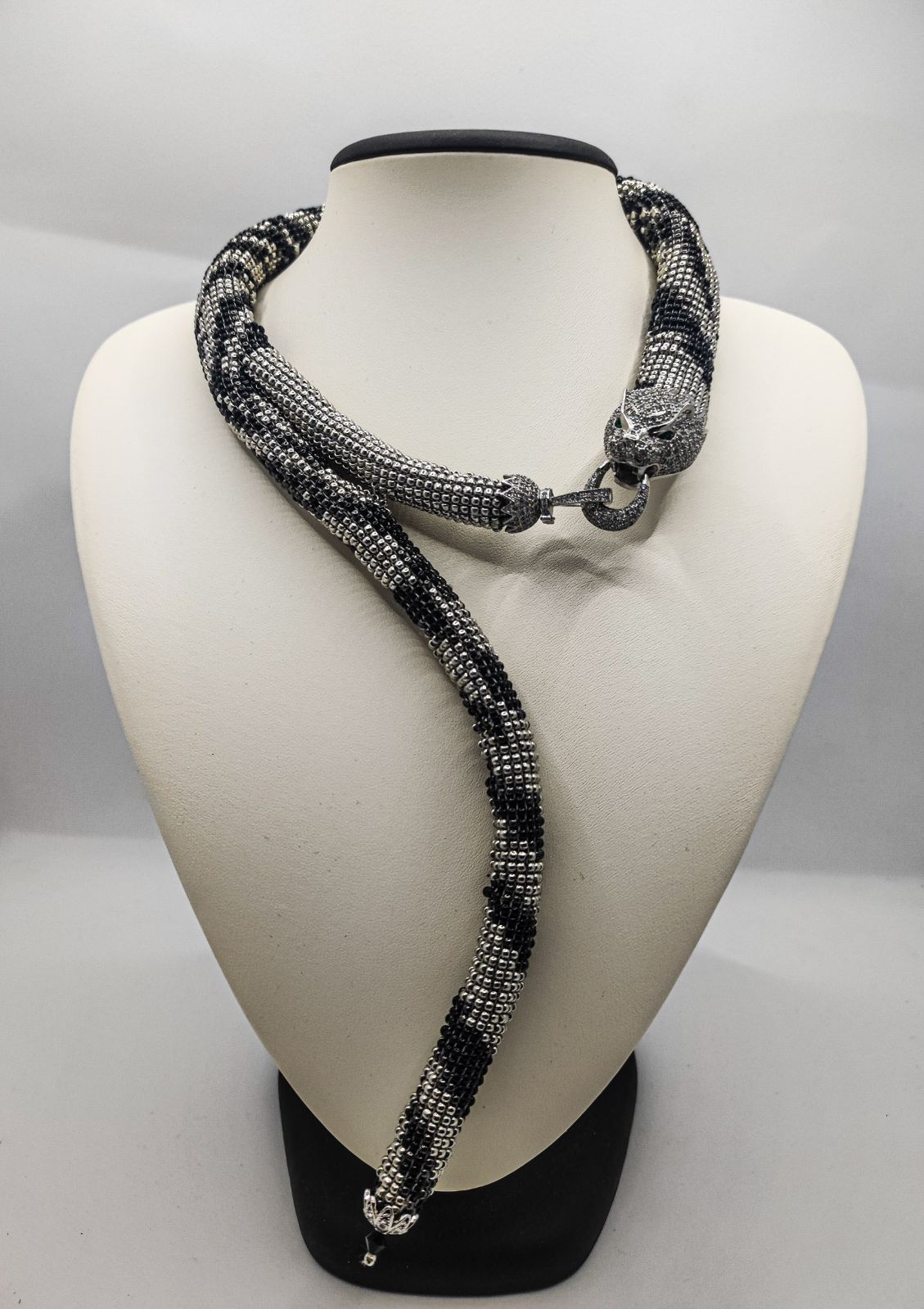Змееобразная композиция украшения призвана соединить черты тигра (женское начало) и дракона – Луна (мужское начало, символ императора, мудрости и силы). Лун всегда наделялся змееподобным телом, по словам Конфуция это обозначает целостность и единство в образе дракона. Дракон в Китае – олицетворение жизни, так как способен существовать между небом и землей.
Тигр в Китае – один из повелителей Запада (страны мертвых), и его черты присущи одной из древнейших богинь даосского пантеона Си Ван Му (матери нефритового императора), – богине смерти, повелительницы Западного неба.
Смысл украшения – в объединении двух констант мироздания: тигра, как воплощения смерти, и дракона, как символа жизни. Их объединение символизирует цикл бытия, его подчинение высшим силам и законам. Выбор белого (серебро) и черного отсылает к соединению Инь и Ян – женского и мужского начал, абсолютной гармонии бытия.
The snake-like composition of the jewellery is designed to combine the features of the tiger (feminine) and the dragon — Moon (masculine, symbol of emperor, wisdom and strength). Moon has always been endowed with a snake-like body, according to Confucius it denotes integrity and unity in the image of the dragon. The dragon in China is the personification of life, as it is able to exist between heaven and earth.
The tiger in China is one of the lords of the West (the land of the dead), and its features are inherent in one of the oldest goddesses of the Taoist pantheon Xi Wang Mu (mother of the jade emperor), — the goddess of death, the lord of the Western sky.
The meaning of the jewellery is the unification of two constants of the universe: the tiger as the embodiment of death and the dragon as the symbol of life. Their union symbolises the cycle of existence, its subordination to the higher forces and laws. The choice of white (silver) and black refers to the union of Yin and Yang — feminine and masculine principles, the absolute harmony of existence.



